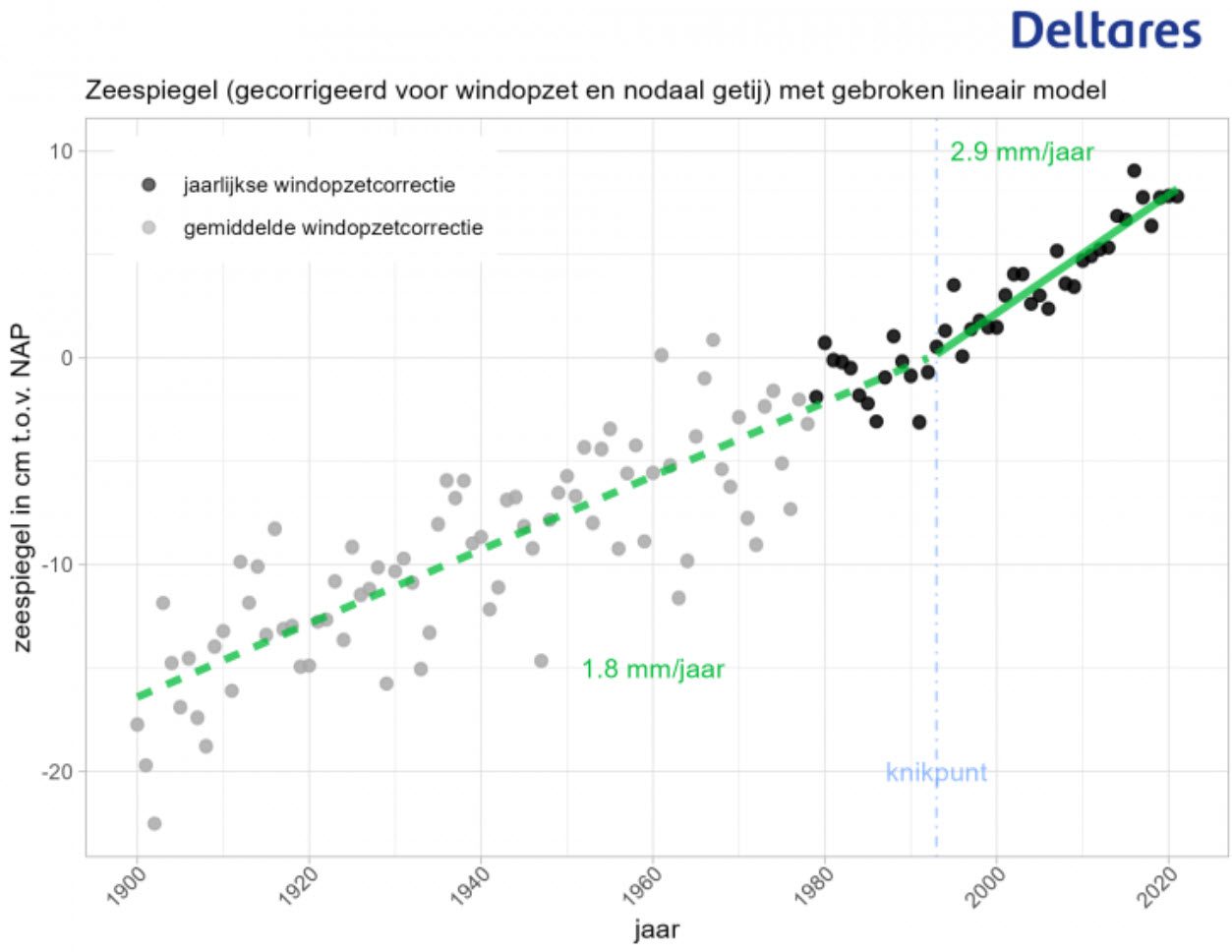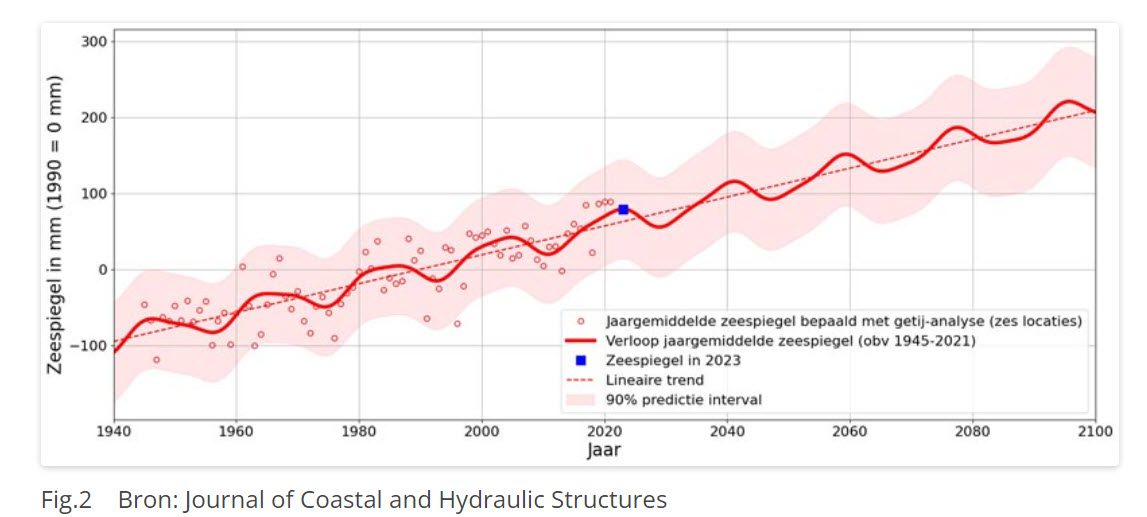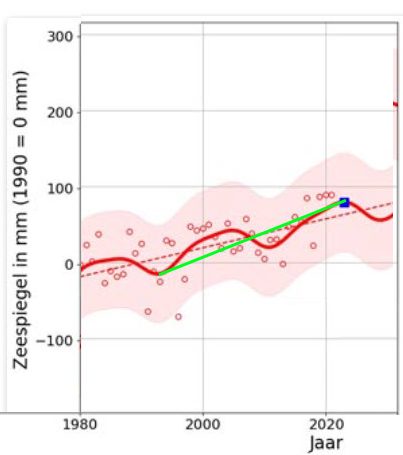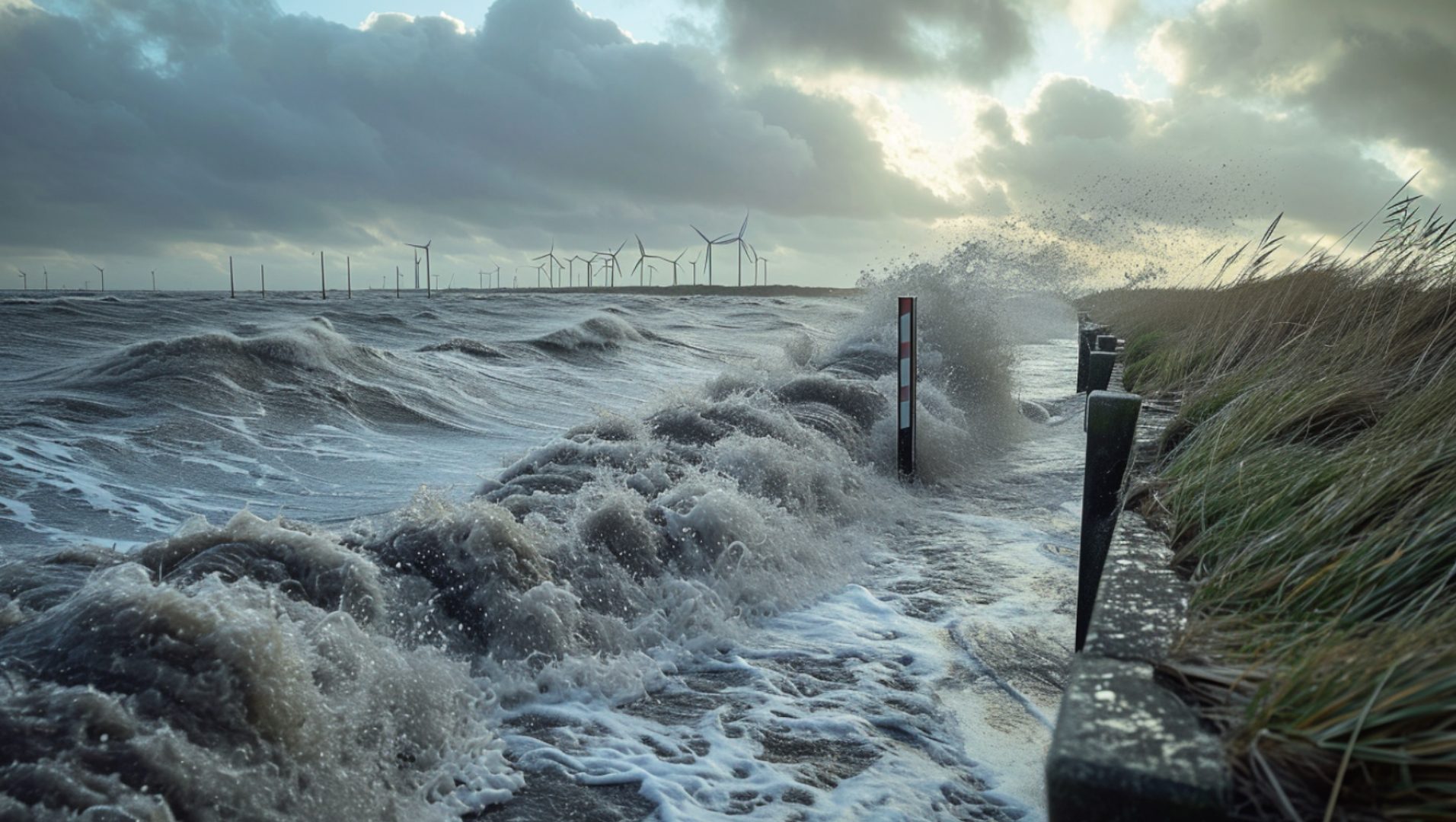Article summary
In our new series on data quality, in the first episode we focus on sea level rise figures for the Netherlands. The reported acceleration claim to 2.9mm per year seems weak.
Read the full article: New Series: Data Quality – 1: Sea Level Rise
reading time: 4 minutes
New series: Data Quality – 1: Sea Level Rise
Your order
Recent polling among visitors to this site shows that there is a need for our perspective on relevant topics beyond those we often discuss here. We want to achieve this desire, but from a perspective where we have internal experience and can offer our additional contribution.
What has been very noticeable during the Corona period is how important the numbers in the model and forecasts based on the RIVM models are. If you go to the basis of those numbers and look at the models, you can clearly see how much those numbers and models depend on the choices that were made when compiling those numbers and models.
The impression was created that these choices were driven by the desired outcome. Especially if the desired policy is obtained or supported.
While in the past there was still room for discussion and debate about choices, this no longer seems possible. Once the results are consistent with the desired policy, there is hardly any debate. The different approach and skewed results are ignored. Those who come up with these numbers are often underestimated.
On this site we will write regularly about this topic and point out that the numbers provided are much less harsh than suggested (and often also serve a specific purpose). I will not discuss (for now) the quality of the forecasts/models nor the possible causes, but will limit myself to the quality of the data.
Today's topic is “Sea level rise in the Netherlands”.
Sea level rise
In March 2023, Deltares published a report in collaboration with KNMI Which shows that since 1992 sea level rise has increased from 1.8 mm per year to 2.9 mm per year. The media also paid attention to him. This is the chart from this report.

In the explanation contained in the report, contained in Media like thisIt stated: “Until about thirty years ago, sea levels were rising by 1.8 mm per year. So the pace has increased dramatically… and this acceleration is consistent with what we know about global developments in sea level rise.
Please note that in the 2018 BC reportIt showed that sea levels rose by 1.9 mm per year between 1890 and 2018. At that time, it was not observed/proven that the increase had accelerated since 1993.
In a recently published peer-reviewed study, author Hessel Voortmann shows that there is much to criticize about these results from 2023, and that there is no evidence of accelerating sea level rise. Here he stands An extensive article about this study. I try to sum it up in my words.
Account components
When calculating sea level change in the Netherlands, there are a number of components to take into account, and it is the choice you make that determines the outcome.
The most important ones are discussed below:
Average of six sites
In the Netherlands there are six sites where sea surface rise has been measured for 130 years. At first twice a day, and then six times a day. The final number comes from those six measurement locations. Challenges remain in each location over time. Including the consequences of the closure of the Zuiderzee, but also changes over the years near the measurement sites.
Wind effect
If there are strong winds from the northwest, this means that the sea will be slightly higher than if the wind is coming from the other side. But in the past it has been calculated that the average has approximately the same effect on the sea height on the coast of the Netherlands from year to year. But a number of researchers in recent years have estimated that there will be changes in the effect of winds on the average height within one year. By applying the correction to this, the percentage of increase increased!
In the Hessel-Wortmann study, a different calculation method was used, and a number of calculation errors were noted by those who determined that the influence of the wind had changed. After applying this correction by Voortmann, sea level rise was lower than determined by Deltares and KNMI. This is the calculated overview of average annual sea surface rise figures in Delfzijl. The red circle is the actual value and the black triangle is determined after mathematical processing of the numbers with correction for various effects.

Influence of the sun and moon
I found the last part of the report most interesting. The Moon and Sun also have a long-term cycle with respect to their distance to Earth, with consequent consequences for sea level rise. One cycle spans 18 years, the other spans 8 years. This also affects the change in sea surface height in different years. In this graph, the wavy red line shows the effect of these cycles on sea level with an average rise of 1.8 mm. The round circles are the real notes. The blue box is the number for 2023.

But there is a way to monitor a faster rise in sea level using this chart and numbers. By making clever use of the valleys in the red wave. Because Deltares shows in the chart that there is a clear curvature after 1993 with a faster increase after that.
But from the wave chart, it looks like 1993 was right at the bottom and the 2023 observation was at the top of the wave. Below I show what the effect is.

The green line shows a faster increase (2.9 mm per year) than the dotted line, which shows an increase of 1.8 mm per year.
Any way
In short: There is much to criticize about observing that sea levels in the Netherlands have risen faster over the past 30 years than in the previous period. The final numbers reached are related to the calculation and correction method and the presentation method used.
With this value, Vortmann's paper shows that scenarios for the rate of sea level rise, as presented by the Intergovernmental Panel on Climate Change and KNMI, are already two times higher in 2020 than the actual measured rate of rise.
(Here you will find a more detailed article on this topic.)
You've just read: New Series: Data Quality – 1: Sea Level Rise
Follow Maurice de Hond X | Facebook | LinkedIn | Youtube.
This site operates thanks to the financial support of its visitors and does not have a paywall or advertiser. Click here if you would like to make a (small) donation.. Our gratitude is great.

“Total coffee specialist. Hardcore reader. Incurable music scholar. Web guru. Freelance troublemaker. Problem solver. Travel trailblazer.”







More Stories
GALA lacks a chapter on e-health
Weird beer can taste really good.
Planets contain much more water than previously thought